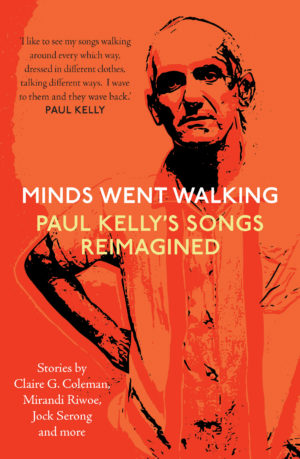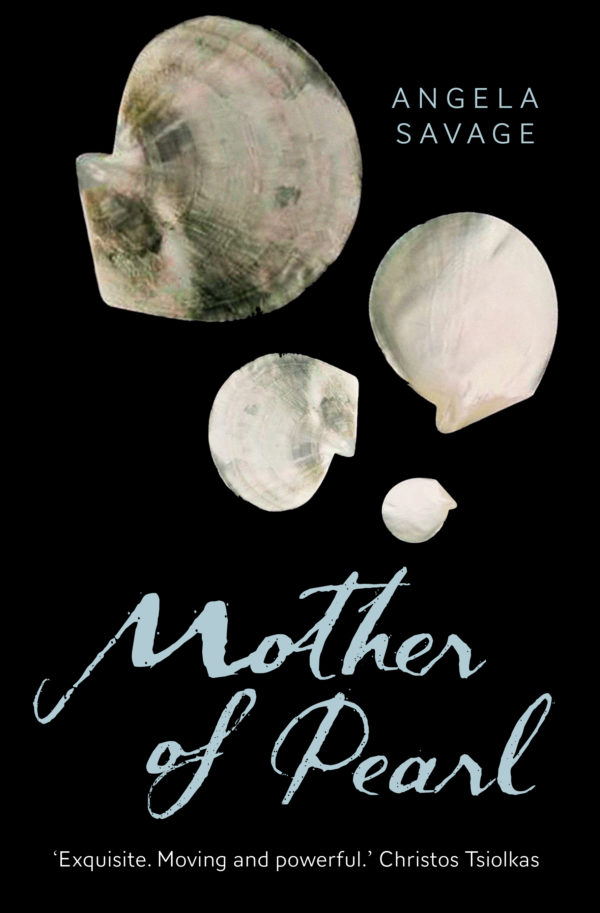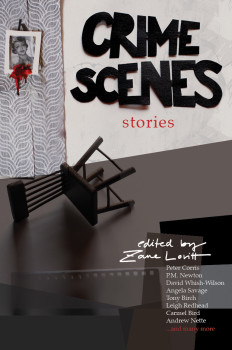This review first appeared on the Wheeler Centre for Books, Writing, Ideas website: Discover the 21 Shortlisted Books for the Victorian Premier’s Literary Awards 2014.
Burial Rites is based on the true story of Agnes Magnúsdóttir, the last woman to be executed in Iceland. Beheaded, no less. But knowing the main character’s fate does not diminish the suspense in this stunning debut novel by Hannah Kent. Exquisitely crafted, intriguing and moving, Burial Rites is a treasure to be admired and cherished.
The story opens in 1829 when Agnes Magnúsdóttir is sent to wait out the time leading up to her execution at the farm of the District Officer and his family in the northern village of Kornsá. There is no risk of escape in this place where winter ‘comes like a punch in the dark’, where ‘blizzards howl like the widows of fishermen and the wind blisters the skin off your face.’
Agnes knows the terrain only too well, having been born nearby to an unwed mother, fostered out, surrendered as a pauper and put to work as a servant. The ease with which she slips into the routine of farm life at Kornsá and her worth as an extra pair of hands temper the resentment of her host family.
At her request, Agnes is visited by the assistant reverend Thorvardur Jónsson, known as Tóti, who defies the District Commissioner’s orders to ‘apply the Lord’s word to her as a whip to a hard-mouthed horse’. Instead, Tóti listens as Agnes knits socks and unravels her story.
Her short life of ‘three and thirty winters’ is characterised by abject poverty, tragedy, heartbreak and a passion for a healer called Natan, which may or may not have turned deadly.
Each conversation between Agnes and Tóti, told in the third person, is later amplified by Agnes in the first person. She describes her relationship with Natan to Tóti as a rare and precious friendship. But the reader knows better:
The weight of his fingers on mine, like a bird landing on a branch. It was the drop of the match. I did not see that we were surrounded by tinder until I felt it burst into flames.
Kent’s vivid evocation of the northern Icelandic landscape is so convincing, it made me shiver. Her prose sparkles, even when the imagery is dark and menacing. Mountain grasses fade to ‘the colour of smoked meat’. The river is a ‘dark intestine’. Mist hovers in ‘ghostly wreaths’ and clouds are ‘crouched too close to the ground’.
Even more startling are the interiors, the homes of villagers who attempt to eke out a living in this unforgiving environment. In the farmhouse at Kornsá, dried fish skins substitute for glass in the windows. Wood panelling has been stripped from the walls and sold to repay debts, leaving dead grass to ‘hang from the ceiling like unwashed hair’.
For the villagers, theirs is a muddy, bloody, icy world where the bones of those who go missing in a snowstorm might lie undetected for years. Women die in childbirth alongside their undernourished babies; and should they die in winter, when the ground is too frozen for grave digging, their bodies might remain for months in storage among sacks of salt and dried fish.
How people in nineteenth century Iceland dressed, spoke and slaughtered their food, what they ate and drank, how they treated ailments and what they believed to be signs of the Devil are all revealed. Yet Burial Rites contains not a sentence of exposition, these rich details woven seamlessly into the story.
But the book’s triumph is the character of Agnes Magnúsdóttir, who despite grief and hardship, remains desperate to live. ‘I am still warm,’ she laments after her execution date has been set, ‘my blood still howls in my veins like the wind itself.’
Even after I finished reading Burial Rites, I felt Agnes linger, as though she was sitting in the room with me, knitting her socks, telling her devastating stories.
Towards the end of the novel, Agnes mourns herself as lost:
….silence will claim you, suck your life down into its black waters and churn out stars that might remember you, but if they do, they will not say, and if no one will say your name you are forgotten I am forgotten.
I was reminded of what Doris Lessing said in her Nobel Prize winning speech: ‘It is our stories that will recreate us, when we are torn, hurt, even destroyed.’
She may have been the last woman executed in Iceland, but Kent has succeeded in recreating Agnes Magnúsdóttir through her stories. And we are all the richer for it.
Burial Rites by Hannah Kent (2013) is published by Pan Macmillan Australia.








Thanks for this wonderful review, Angela. This really does sound like an amazing novel, and thank you for giving us such a vivid sense of its language/style as well.
So one question for me is how Hannah as an Australian author came to choose her Icelandic subject. Do you happen to know?
LikeLike
Thanks for dropping by, Mrs P. As I understand, Hannah Kent was on a Rotary exchange in Iceland after finishing high school when she first heard the story of Agnes Magnúsdóttir. There’s a fascinating account of how she wrote the book here, in which an Icelandic journalist observes, ‘What is interesting is that it took an Australian to write the book.’
LikeLike
Thanks, Angela – amazing what youthful travel experiences can lead to…
Yes, interesting that the story was not picked up by an Icelandic author first. But some stories perhaps need telling by an outsider. Sometimes that perspective can be particularly revealing (as your own novels show).
LikeLike
Well said on both fronts, Mrs P. It is amazing what youthful travel experiences can lead to. That’s why I always recommend young people travel the year after they finish school. It is the only unsolicited advice I ever offer, other than suggestion young men learn to dance if they want to guarantee their popularity with the ladies 😉
And yes, perhaps some stories need telling by an outsider. It would be a good topic for a future post…
LikeLike
Angela – As thought I weren’t already quite keen to read this, your top-notch review has bot me even more interested. Thank you. Another for my ‘read it soon’ list.
LikeLike
Margot, based on the books you listed on Pulpcurry as your Top 5 crime picks for 2013, I think Burial Rites is right up your alley.
LikeLike
🙂
LikeLike
Great review Angela and I concur – it’s a very evocative book – I read it earlier this year but still have the images in my head that it created of both Agnes and her environment.
LikeLike
Bernadette, when you read as much as us (noting that you read much more than I do) I think the measure of a great book is how it lingers in the memory. This is in large part how I define an outstanding read. Burial Rites sure fits that bill.
LikeLike
Indeed. I read another Icelandic book a couple of months later (one of those nordic noir tales you’re not so keen on) and I every time the author described the countryside or the old farm cottages I kept thinking of poor Agnes.
LikeLike
A fine review of what is, no doubt, a very readable novel. The samples of Hannah Kent’s prose has already made me want to read more of her exquisite writing. Thank you, Angela.
LikeLike
Thanks Prashant. There’s no better outcome of a book review than to make someone want to read the book. If/when you do, please let me know what you think.
LikeLike
Here’s a silly question……… why isn’t the Victorian Premier’s award given to Victorian writers? We have a lot of them. At least two of the nominees have never lived here and are writer’s who receive awards on a regular basis because of their name and reputation. So why are they on a Victorian Premier’s shortlist?
Terry
LikeLike
Terry, it’s a good question, one better aimed at the organisers than at me. But my understanding is that while only Victorian writers are eligible for the Victorian Premier’s Literary Award for an Unpublished Manuscript by an Emerging Author, the remainder of the awards are not about Victorian writers so much as about the Victorian government’s support for literary achievement. So the awards are about a Victorian perspective on literary excellence, rather than literary excellence in Victoria.
LikeLike
Fair answer. Thank you.
Terry
LikeLike
P.S. I have sent my thoughts to ‘the authorities’, which probably means that I can kiss goodbye to any future awards in my fantasy future.
Terry
LikeLike
Never say never, Terry.
LikeLike
If you say so.
LikeLike
This has gotten such good reviews, but alas, I’m so opposed to the death penalty — and even more, this is about woman, that I think I have to pass on it. Not because it doesn’t have merit, but because this issue is such a tough one in the U.S., where there is a death penalty — and it’s used, especially in the deep South, especially with poor people and people of color. And the right wing is so tied to this horror that it’s a big issue in state elections. It’s amazing how these people can call themselves “pro-life,” yet go all out for the death penalty and war! Yes, that’s what we deal with over here.
LikeLike
Rest assured, Kathy, this book is definitely not pro-death penalty (to which I am as fiercely opposed as you are). If anything, it adds to the case against capital punishment by, in the first instance, portraying the ‘criminal’ (I want to say ‘victim’) as a valuable human being; and secondly by exposing the class and gender prejudices that most likely were used to justify her execution. Also, the execution itself is not described in any detail.
Why don’t you wait and see what our friend Margot thinks of Burial Rites.
LikeLike
Of course, I’ll read what Margot writes, although her reading is more expansive than mine, more adventurous.
However, I have a stack of books, which focus on the woeful position of women and I often don’t want to read one more book about the oppression of women. I know it. So the books sit here.
LikeLike
Pingback: My year of reading 2013 | Angela Savage
Pingback: Six degrees of separation: Burial Rites | Angela Savage